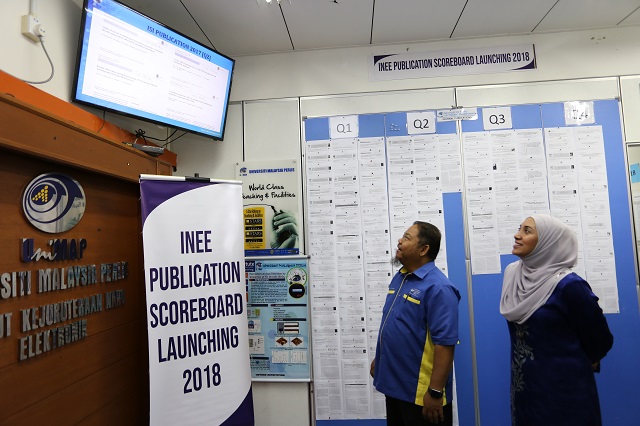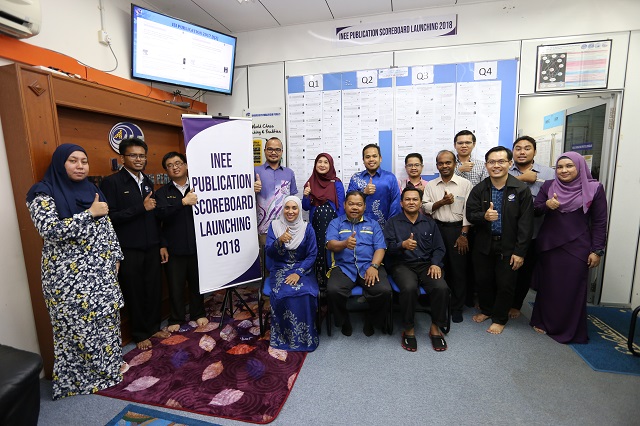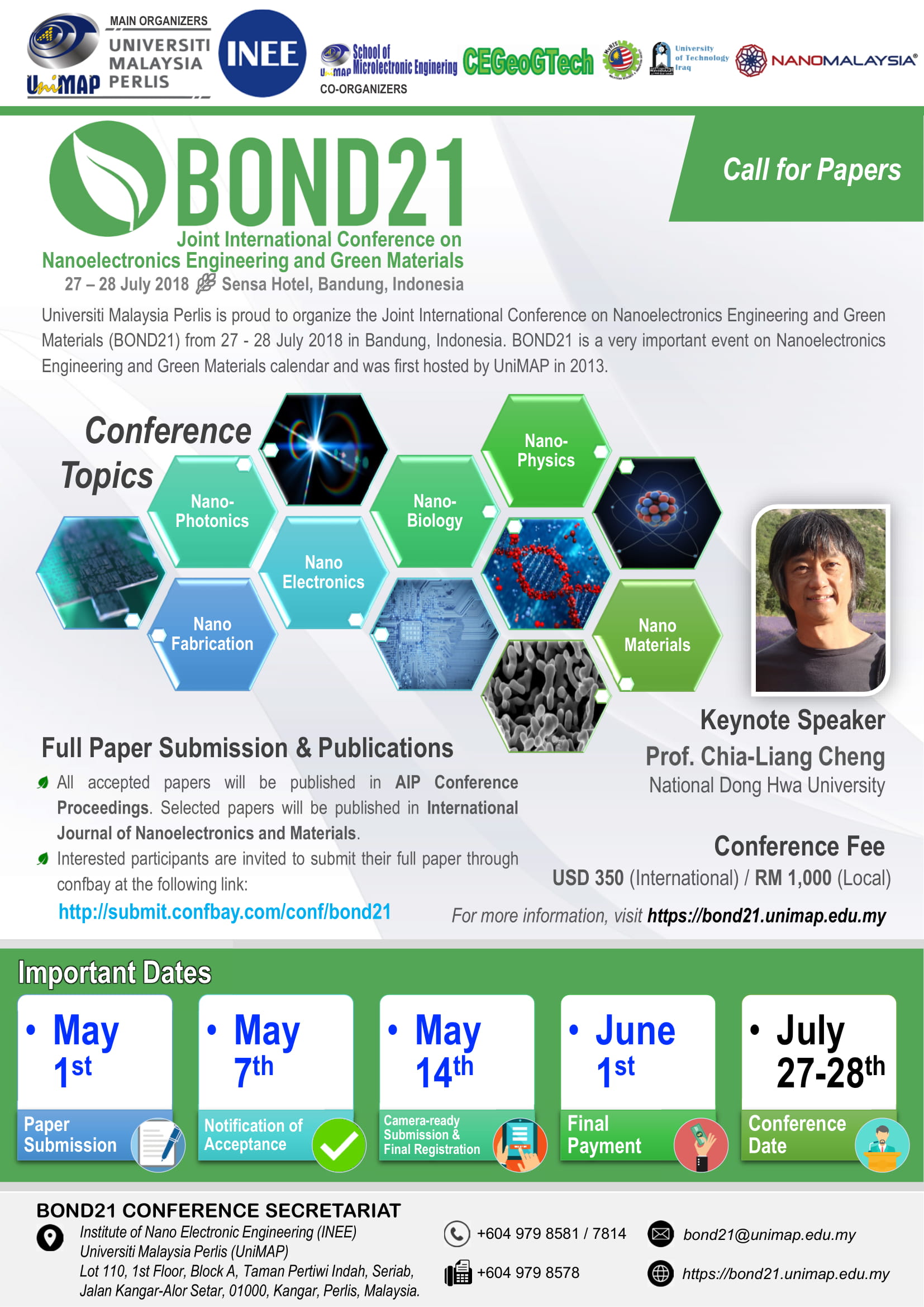Kangar, 30 Mac – Bagi memberi motivasi dan inspirasi kepada staf Universiti Malaysia Perlis (UniMAP), Institut Kejuruteraan Nano Elektronik (INEE) melakar sejarah melancarkan Papan Skor Penerbitan (Scoreboard Publication) serta Papan Skor Digital (e-scoreboard) institut itu, di sini, hari ini.
Pengarah INEE UniMAP, Prof Madya Dr Ruslinda A. Rahim berkata pelancaran papan skor berkenaan adalah yang pertama diwujudkan di UniMAP serta di kalangan Universiti Awam (UA) lain.

Katanya, ia dilancarkan sebagai gambaran dan satu strategi INEE agar mampu menghasilkan penerbitan tertinggi dan berkualiti di samping ke arah pengurangan penggunaan kertas bagi menjimatkan kos percetakan.
“Walaupun INEE sebuah unit yang kecil namun budaya kerja berkumpulan penyelidik INEE bersama pusat tanggungjawab (PTj) lain di UniMAP serta pelbagai institusi luar yang lain dapat dihasilkan menerusi penubuhan papan skor ini sekaligus mampu meningkatkan jumlah penerbitan,” katanya ketika menyampaikan ucapan aluan sempena majlis pelancaran papan skor itu.
Tambahnya, bagi 2013 hingga 2017, INEE berjaya menerbitkan artikel dalam jurnal bertaraf Q1 dan Q2 sebanyak 50 peratus daripada jumlah penerbitan yang dilakukan.
Ujarnya, papan skor digital akan dikemaskini setiap dua minggu sekali menerusi pautan laman web INEE iaitu https:// inee.UniMAP.edu.my.
“Dengan penubuhan papan skor ini juga diharapkan menjadi titik tolak dan menyuntik semangat penyelidik-penyelidik UniMAP meningkatkan jumlah penerbitan sekaligus menjadi rujukan penyelidik dari seluruh dunia,” katanya.
Pelancaran Papan Skor Penerbitan itu disempurnakan oleh Timbalan Naib Canselor (Penyelidikan & Inovasi) UniMAP, Prof Dr Uda Hashim.

Sementara itu, Prof Dr Uda berkata penubuhan papan skor itu diharapkan menjadi contoh bukan sahaja kepada UniMAP tetapi kepada UA lain di Malaysia berikutan momentum penghasilan output penerbitan di dalam Scopus juga perlu ditingkatkan bagi memenuhi kehendak semasa Penilaian Penyelidikan Malaysia (MyRA), Kementerian Pendidikan Tinggi (KPT) dan QS.

Sumber: UniMAP





